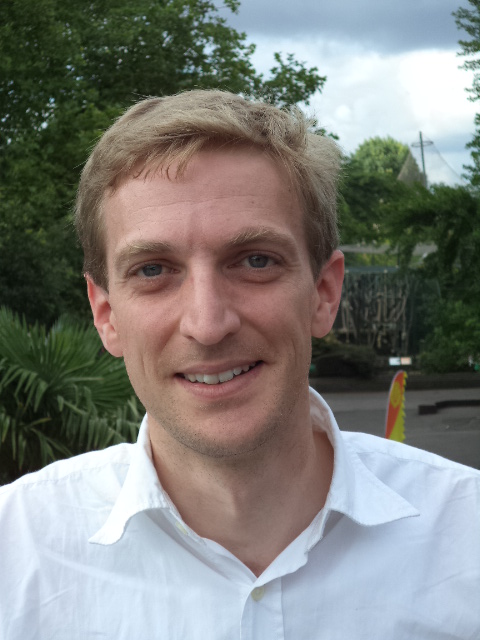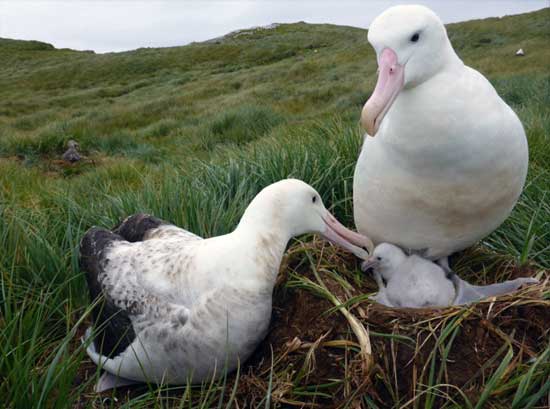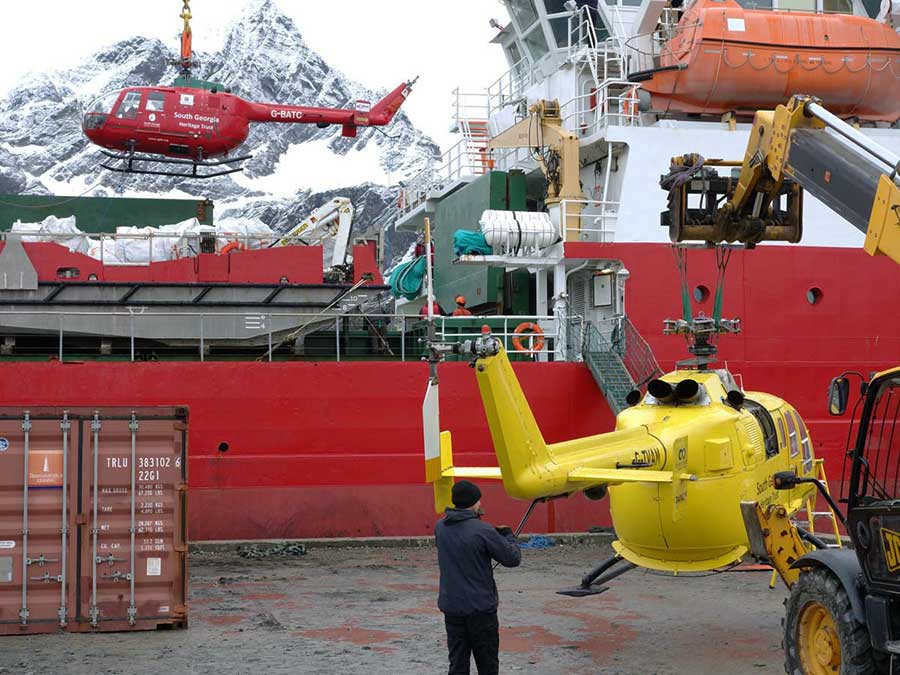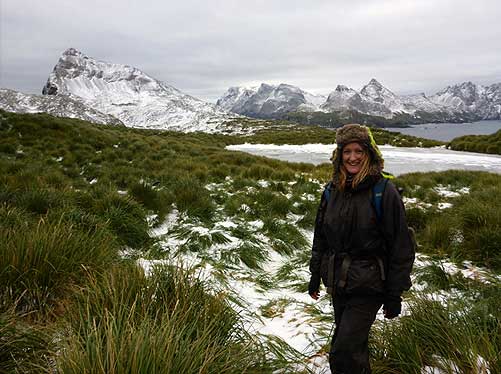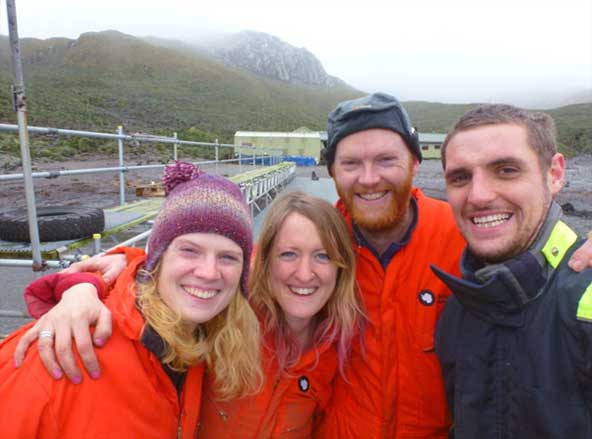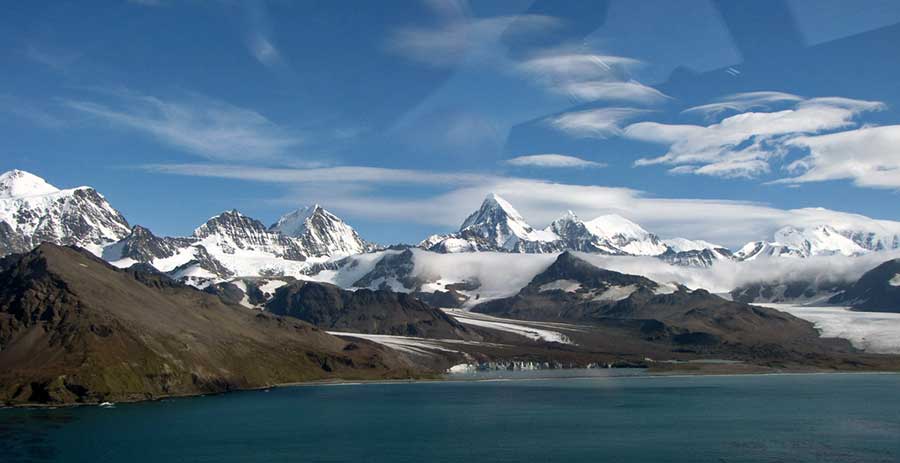This newsletter is not produced by GSGSSI; it does not necessarily reflect their views.
To subscribe to the SGIsland News Alerts list click here
The Commissioner, Colin Roberts, has announced that the new Chief Executive Officer (CEO) for GSGSSI will be James Jansen. James will be taking his second secondment from his long-term employers, the UK Department for Environment, Food and Rural Affairs (DEFRA) to work on South Georgia matters. He previously had a secondment as Sustainable Fisheries Manager in the Polar Regions Department of the FCO in 2010-12.
He currently works at DEFRA as an International Policy Adviser. He should be taking up his new role as GSGSSI CEO in July. Commissioner Colin Roberts said he was “delighted” to be able to tell people about the appointment of James Jansen who, he said “comes with a wide range of environmental, fisheries and South Georgia expertise as well as being a highly respected Whitehall policy officer and administrator.”
GSGSSI have prepared a draft strategy for South Georgia and the South Sandwich Islands for five years from 2016-2020 and are inviting comment on the draft before the document is finalised.
The draft strategy is divided into a series of sections outlining GSGSSI’s proposed strategy for the next five year period. The sections encompass the main areas of activity in the Territory such as fisheries, environmental management and tourism. The document also reviews the Government’s progress in the last five years – a period which has seen some major environmental achievements in the Territory including the completion of the rat eradication baiting by the South Georgia Heritage Trust (SGHT), the completion of the reindeer eradication and the declaration of a Marine Protected Area.
GSGSSI intend to ensure the long-term preservation of the relatively pristine natural environment of the Territory and state that their Strategic Objectives are:
- To manage the affairs of SGSSI and the surrounding 200 nautical mile Maritime Zone through good, efficient, transparent and effective government;
- To conserve the pristine nature of the Territory’s environment, preserving and, where practicable, restoring the native biodiversity and habitats;
- To manage fisheries in the SGSSI MPA to the highest international standards in a safe, sustainable and innovative manner, ensuring a good revenue stream for SGSSI, whilst minimising the impact on non-target species and the marine environment;
- To facilitate safe, environmental tourism that showcases the natural beauty and sustainable management of the Territory, but which has a negligible environmental footprint;
- To preserve, where practicable, the unique industrial and cultural heritage of South Georgia, either in situ or through transfer to museums;
- To encourage high quality scientific research, prioritising research that underpins GSGSSI management of the Territory, and to improve public awareness of GSGSSI’s stewardship of SGSSI.
GSGSSI welcome the comments and views of all stakeholders on the draft strategy document. Comments should be submitted in by July 31st 2015.
The 1MB, 31 page document can be downloaded here.
In early January, a team of intrepid scientists and tourists embarked on a unique collaborative expedition to survey South Georgia’s outlying wandering albatross colonies. The last island-wide survey took place in 2004 and showed a 30% decline since the survey in 1984. On this basis one of the key recommendations of the South Georgia Agreement on the Conservation of Albatross and Petrels (ACAP) plan was that an archipelago-wide census be undertaken every 10 years in order to track if the global conservation efforts to save this iconic species are being successful.
The 2015 survey was funded by GSGSSI, but some berths were made available to Cheesemans Ecological Safaris (CES) in order to offset the cost of the trip. The CES clients were given the opportunity to help the GSGSSI scientists with counts, and, under a special permit issued for the survey, visit sites that are normally not open to tourists. The team was based on the yacht Hans Hansson captained by seasoned skipper Dion Poncet.
The aim of the expedition was to visit all the known wandering albatross breeding sites outside of the large colonies at Bird Island and Annenkov Island. The population at Bird Island is surveyed each year, but it is important to periodically visit smaller colonies to understand the trends in abundance and distribution on South Georgia as a whole. Logistic constraints meant it was not possible to visit Annenkov Island this year, but a survey is planned for 2016.
Between January 9th and 20th 2015, GSGSSI scientists visited 25 sites from the Bay of Isles to Cape Disappointment. Counts ranged from having 34 wandering albatross nests with eggs at Cape Alexandra to just a single pair at Mollyhawk Island. In the coming months the survey data from the South Georgia mainland will be combined with survey data from Bird Island and analysed more fully, but early indications are that populations are down approximately 15% from the survey in 2004. The decline matches with the annual trends that have been seen on Bird Island and give a clear indication that more work to save the wandering albatross is needed.
A major component of the population decline of this great ocean nomad is likely to be due to mortality associated with fisheries. Although in the last decade, no wandering albatross have been killed by vessels licensed to fish in South Georgia waters, the wide foraging range of this species means it is vulnerable to fisheries operating elsewhere in the South Atlantic and beyond.
During April, fishing activity took over from tourism as the main maritime activity. The last cruise ship of the season, Plancius, visited Grytviken on April 2nd and the last yacht of the season left on April 6th. Both vessels were heading north to Tristan da Cunha.
Two longliners were fishing in the South Sandwich Islands area at the beginning of the month. One completed its quota and then moved up to South Georgia ready for the start of the toothfish season on April 16th. It was joined by three other longliners and they were all inspected and licensed at Grytviken before commencing fishing. The second longliner that had been fishing in the SSI area completed its quota and by April 22nd had moved north to join the rest of the South Georgia licensed fleet.
The British Antarctic Survey (BAS) vessel RRS Ernest Shackleton came alongside the King Edward Point (KEP) jetty on the 14th/15th to load cargo and to collect personnel, including the SGHT Habitat Restoration (rat eradication) team and their three helicopters.
My journey from Norway to South Georgia took exactly two weeks, included a night in Oxford and a week in the Falklands. I used the time in the Falklands to continue my research into African whalers in the South Atlantic.
Leaving Stanley with a bad weather forecast in mind and lots of seasick pills in my pockets, I had a jolly good time on the Pharos SG thanks to the high spirits of Captain Chris and his crew, arriving in South Georgia at the end of March. The main purpose for my visit was to have a look at the activities of the South Georgia Museum, fulfilling an agreement between the South Georgia Heritage Trust and the Whaling Museum in Sandefjord. It was my first visit to South Georgia, but to a place I already felt familiar with as Grytviken is a place I have studied from afar for many years.
When the whale factory at Grytviken was established in 1904, it was the first modern whaling station in the southern hemisphere. It also marked the starting point of a ruthless and unsustainable hunt for whale oil in Antarctic waters involving several nations, dozens of companies, hundreds of ships and thousands of men. Half a century later the largest animal on the planet, the blue whale, was threatened by extinction. This story is cruel, but it also makes the whaling station at Grytviken a very important industrial heritage site on a global scale.
My research has highlighted that in the early year of operation hundreds of African whalers worked here. As I arrived I was carrying with me an exhibition on this subject which is now displayed in the SG Museum.
I spent three weeks on South Georgia working with the staff at the museum in Grytviken. The majority of visitors to the museum are passengers on cruise ships. Before the visit to the whaling station, the passengers are given a presentation on board about the Habitat Restoration Project by the SG Director Sarah Lurcock. Many passengers found the effort to get rid of the rats on South Georgia very interesting and impressive.
The guided tours at Grytviken by the museum staff give the visitors a unique insight into how the whaling station was operated during its heyday. I had a chat with quite a few of the visitors at the whaling station or in the museum. Some of them were stunned by the stories about the industrial whaling activities on South Georgia over the course of 60 years in the last century. A young Norwegian man in his 20s was highly surprised to know that there once were thousands of his countrymen working in the whaling industry on South Georgia.
In all, my few weeks at Grytviken was an interesting experience in a very special place. As a visitor to Grytviken today, walking in between barking fur seals and penguins in the old constructions of the whaling factory, it is difficult to imagine the noise and the horrible smell and all the working men and whale carcasses of the past, but the traces are clearly visible in the remains of the factory and in the museum. Pieces of whale bone spread around on the ground in the area also indicate what was once going on in Grytviken.
Artist Keith Shackleton, who died on April 17th, had a long term association with South Georgia and the polar regions, and his striking artwork often portrayed the animals and birds of the high latitudes. He was also well known as a naturalist and television presenter.
Keith Shackleton, a distant relative of Sir Ernest Shackleton, was a friend of Captain Scott’s son Peter, who was also a renowned wildlife artist and naturalist. The notable parallels between the two men’s’ lives continue. They were skilled and successful racing dingy yachtsman; Keith Shackleton represented Britain in international dinghy racing several times, and they travelled together on some of the earliest tourist ship visits to the Antarctic aboard the Lindblad Explorer. The friendship of the two men led to Keith becoming a founding member, and later Vice-President, of Scott’s Wildfowl and Wetlands Trust.
Keith was the son of aircraft designer W S Shackleton. As a child he lived in Australia but the family moved to London in 1931. He served in the RAF for five years, in Europe and the Far East. During the war he painted war scenes. Later he worked in the family aviation business as a salesman and pilot, rising to become a director in 1951. He had continued painting in his spare time and during the 1950’s published two beautiful books of paintings, drawings and essays called ‘Tidelines’ and ‘Wake’.
Keith Shackleton began to spend more time painting at the same time as he started his television career co-presenting the children’s programme ‘Animal Magic’ with Johnny Morris. He was particularly concerned to increase public awareness of endangered species and worked with the RSPB on their ‘Save the Albatross’ campaign whose work is centred on the South Atlantic. He wrote the forward to the ‘Visitor’s Guide to South Georgia’ and was involved in various South Georgia groups.
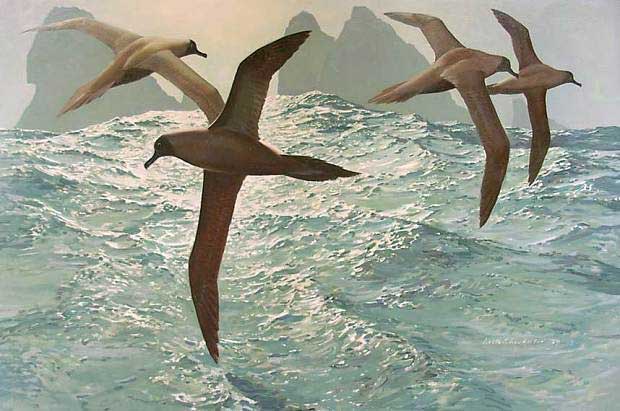
Around the Shag Rocks, Light-mantled Sooty Albatrosses (1979) by Keith Shackleton. Image Nature in Art, Gloucester.
He was also President of the Society of Wildlife Artists and the Royal Society of Marine Artists; Chairman of the Artists League of Great Britain; Vice President of the Society of Wildlife Artists and the Guild of Aviation Artists and a trustee of the UK Antarctic Heritage Trust. He was awarded an MBE for services to wildlife conservation in 2012.
Keith Shackleton was known as a charming and modest man with a great sense of humour. He was a great raconteur who had a seemingly endless fund of stories and anecdotes drawn from his rich life which was filled with adventure. He married Jacqueline Tate in 1951 and they had two sons and a daughter. Keith Shackleton was 92 when he died.
Info Telegraph
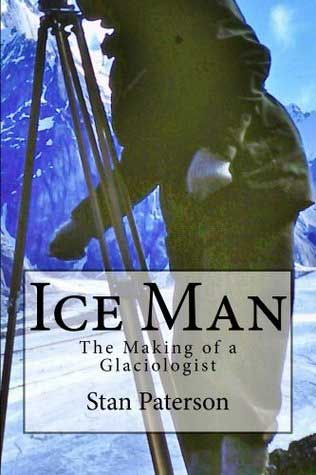 Stan Paterson died on October 8th, 2013, the very month that copyright was claimed for his self-published autobiography ‘Ice Man: the making of a glaciologist’, which he wrote in the twilight of a long and adventurous life.
Stan Paterson died on October 8th, 2013, the very month that copyright was claimed for his self-published autobiography ‘Ice Man: the making of a glaciologist’, which he wrote in the twilight of a long and adventurous life.
It is an odd book, the essence of which is well summarised in the Preface and Introduction written by his friends Ian Smart and David Fisher, and by the five-page summing-up which was Stan’s own last chapter. Fully two thirds of the book are dedicated to the two major expeditions in his early life on both of which he was a surveyor: the British North Greenland Expedition (BNGE) of 1952-54, and the South Georgia Survey (SGS) of 1955-56. His book unfortunately adds very little to the accounts that Jim Simpson, the expedition leader, wrote in the book ‘North Ice’ (1957), or to that in ‘High Arctic’ (1957) by Mike Banks, who was in charge of Stan’s gravity-measuring party.
The rest of the book describes a somewhat capricious life and career that soon afterwards took him to Canada and slowly became more focussed on glaciology. He described himself as someone who, on leaving Edinburgh University in 1949, “graduated as a competent mountaineer and also acquired a degree in maths and physics” and that broadly is the theme of the book. He spent much of his career “working in isolation” from fellow glaciologists, perhaps partly by choice. The book is interspersed with slightly didactic explanations of the scientific work that he did, and with references to climbing trips to the mountains that he loved. His main academic legacy is probably the seminal book ‘The Physics of Glaciers’, which was first published in 1969.
Readers of this Newsletter will recall that the full story of the South Georgia Surveys was recently documented by Alec Trendall in his book ‘Putting South Georgia on the Map’ (2011) and I remember that Stan co-operated, perhaps a bit grudgingly, to enable Alec to produce a copiously illustrated account of all of the survey expeditions. Stan’s generosity thus left him with few fresh observations to make in his own account of this, the third expedition. He was, however, more forthright than Alec in his comments about Duncan Carse’s poor leadership skills and his enthusiasm for alcohol, of which he was a closer witness, and he also describes a trip that he made with the whalers. Stan glosses over a controversy that later arose over the expedition’s notorious failed attempt to climb Mount Paget, in which John Cunningham, the distinguished mountaineer, usurped Duncan and led part of the team safely down a glacier to the coast. Stan’s book curiously repeats, almost verbatim, a comment that Jeff Connor made in his biography of John Cunningham called ‘Creagh Dhu Climber ‘(1999) that John was awarded “the Perry Medal by the British Antarctic Survey” for his part in the episode. In fact no such medal exists, but John did get the Polar Medal for the three years’ service which he later gave to the British Antarctic Survey in Graham Land.
In the 50 pages of his book which Stan allocated to the SGS, he makes no reference to any glaciological thoughts that he may have had while on South Georgia, nor, more modestly, to the significant contribution he made in drafting that season’s part of the 1:200,000 map which Tony Bomford, a year or so later, was able to incorporate into the entire sheet.
The two maps in the book are not very helpful, and there are no photographs, apart from that on the cover, which symbolically, perhaps, reveals nothing of the man. Alec Trendall used a very similar photograph for the cover of his book in which Stan is using a theodolite, and has his back to the camera!
‘Ice Man: the making of a glaciologist’ by W.S.B Paterson is published by Papyngay Press, Oregon. It has 197 pages and a preface by Ian Smart, an introduction by David Fisher, and a foreword by Myrtle Simpson. ISBN-9780975 574935
This book review first appeared in the South Georgia Association Newsletter Number 28 May 2015.
By Lucy Quinn, Albatross Zoological Field Assistant at the BAS Research Station at Bird Island.
April has been an extraordinarily busy month on Bird Island. It’s also been a month of change as we have gone from 10 people down to just 4, reflecting a change too in the seasons.
April was a month of a LOT of bird ringing for ‘Team Bird’. We put rings on all the southern giant petrel and mollymawk (grey-headed and black-browed albatross) chicks, and got 70 GLS (tiny tags which record light levels) onto grey-headed albatross chicks. Hopefully in years to come these chicks will return to Bird Island and these tags will tell us important information about where they go in these formative years. We also completed the wandering albatross chick-rearing GPS tracking, and Al has deployed 13 satellite tags on white-chin petrel chicks. Thrillingly we are now getting real-time data on where these fantastic petrels go for their very first flight – truly wonderful technology in action.
The mollymawks are beginning to fledge now which means I am out most days checking on the study colonies to get accurate fledge dates. I know it should be a rule that you should never get attached to a favourite individual bird but I did have one at our study colony J. It was the first black-brow egg I saw on my second day here on Bird Island and was the chick we used when I was first shown the technique of how to weigh an albatross chick. I followed the egg to hatching, had seen it become a fine-looking chick and finally to fledging – a special moment. Unfortunately, the next day I saw the reality of nature in action as I found it being eaten by another resident of the island, a brown skua. I thought to myself, this is how nature is, it’s a beautiful thing – but I am never going to have a favourite chick again!
The arrival of the leopard seals is exciting, Siân takes detailed photographs of each leopard seal that is spotted and, where possible, collect scats (that’s poo to you and me). The first leopard seal to haul up was called Max, a regular in recent years, and we were lucky enough that his chosen sleeping spot is right by our jetty! Siân came running into our office exclaiming that “Max has done a poo!!” and quickly set about gathering it all up before the poo-loving sheathbills could eat it!! It’s one of the many glamorous jobs that need performing living as a zoologist on Bird Island.
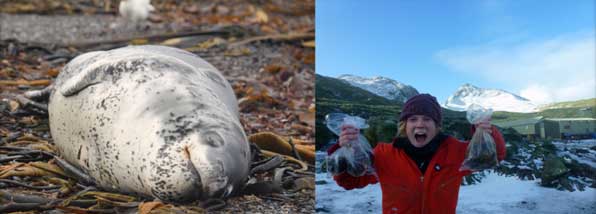
Max sleeps peacefully just outside base so Siân takes the opportunity to collect his scat. From the scats we can tell just what the leopard seals have been eating. Photos Siân Tarrant and Lucy Quinn.
Station Leader Adam was busy getting everything ready for the last ship coming in before winter. This meant having to get all the cargo ready to leave and making sure the departing personnel had everything packed, and handing over to Alastair who is now the winter Station Leader. It was hard to say goodbye to the summer team. We had worked so closely with them for 5 months. Living and working together in an environment such as this can form incredibly close friendships and I have learnt so much from all of them. As the launch to the ship left, the 4 of us left standing on the jetty felt somewhat shocked, but it was also an incredible feeling and we are all so excited for the upcoming winter and greatly looking forward to seeing how the island changes through the seasons. We’ve already noticed the nights are drawing in more and more and there is a more chilly than usual bite to the air now. Two weeks on, we have now settled into a routine and are getting used to the quieter base.
Big Flock of Migrants: A flock of thirteen cattle egrets were seen on April 5th on a hillside above the beach under Brown Mountain, King Edward Cove. Cattle egrets are one of the most widely dispersing birds in the world and often turn up on the island at this time of year, but rarely in such large numbers. More commonly they are seen in pairs. Sadly the birds do not survive the cold climate of the island.
Bubbles for Babies: Following the completion of baiting for the SGHT Habitat Restoration Project to remove rats from South Georgia, there are now two bottles of champagne on offer for evidence of pipits successfully recolonizing the mainland. One bottle has already been won by Sally Poncet when she was able to photograph a pipit nest in the Phase Two area a few months ago. The South Georgia Association still has a bottle of bubbles on offer for the first confirmed nest on the Thatcher Peninsula, and now there is a bottle of Moet champagne waiting to be claimed for the first confirmed nest in the recently baited Phase Three area to the south-east of the island.
Bird Island Hybrid GP Pairs Successful: Studies of giant petrels (GPs) on Bird Island and the distant sub-Antarctic islands of Marion and Macquarie Island were looking at the effects of hybridization between the two distinct species Southern and Northern giant petrels. In recently diverged species, like GPs, hybridization can commonly occur, but the breeding attempts are not generally as successful as in same species pairs.
Around 1.5% of breeding pairs of GPs were found to be mixed-species. Scientists recorded the extent of hybridization, mate fidelity, timing of breeding and breeding success in both mixed and same-species pairs of the two GP species. The mixed pairs’ eggs were always laid earlier than those of southern GP pairs and normally later than the northern pairs. And, whereas mixed-species pairs at both Marion and Macquarie islands always failed before hatching, on Bird Island the mixed pairs would successfully hatch a chick around 15% of the time (a lower success rate than that of same-species pairs).
Studies of the Bird Island birds over several seasons showed that birds that formed mixed-species pairs also bred with same-species partners in other breeding seasons, though some mixed-species pairs remained together for multiple seasons.
A paper on the study has recently been published in the journal PLoS One and goes on to discuss the potential causes and evolutionary consequences of hybridization. You can read the paper in PLoS One here.
Poles Apart: changing attitudes to whaling in the 20th century: An exhibition at the Fife Fisheries Museum, Scotland, aims to explain the history of whaling, from the fall of the Arctic industry in Dundee, to the rise and fall of the huge whaling industry in the Southern ocean, by using the opinions of those involved with the industries. The exhibition features objects on loan from several museums including the South Georgia Museum. The exhibition ends May 31st.
‘Poles Apart: changing attitudes to whaling in the 20th century.’ Fife Fisheries Museum, St Ayles, Harbourhead, Anstruther, KY10 3AB.
Penguin Weekend – Edinburgh: The South Georgia Association (SGA) is organising a weekend meeting in Edinburgh on October 30th and 31st 2015. Edinburgh has many connections with South Georgia and the Antarctic. For instance the first penguins at the zoo were collected and delivered by South Georgia whalers and now the zoo is famous for its daily Penguin Parade and Penguin Rock (Europe’s largest outdoor penguin pool). The King Penguin Sir Nils Olav, is Colonel-in-Chief of the Norwegian Royal Guard. South Georgia connections also include Christian Salvesen of Leith sending whaling ships to South Georgia from 1900s and the newly-married Ernest Shackleton was Secretary of the Royal Scottish Geographical Society. Chas. Mackinlay and Co. (now Whyte and Mackay) despatched 25 cases of 10-year-old malt whisky for Shackleton’s British Antarctic Expedition in 1907 – cases of the whisky were discovered under the Nimrod hut recently and were used to recreate ‘Shackleton’s Whisky’, a tasting of which will be part of the event. Channings Hotel incorporates the house where Ernest Shackleton lived and the SGA weekend’s events will conclude with a dinner there.


